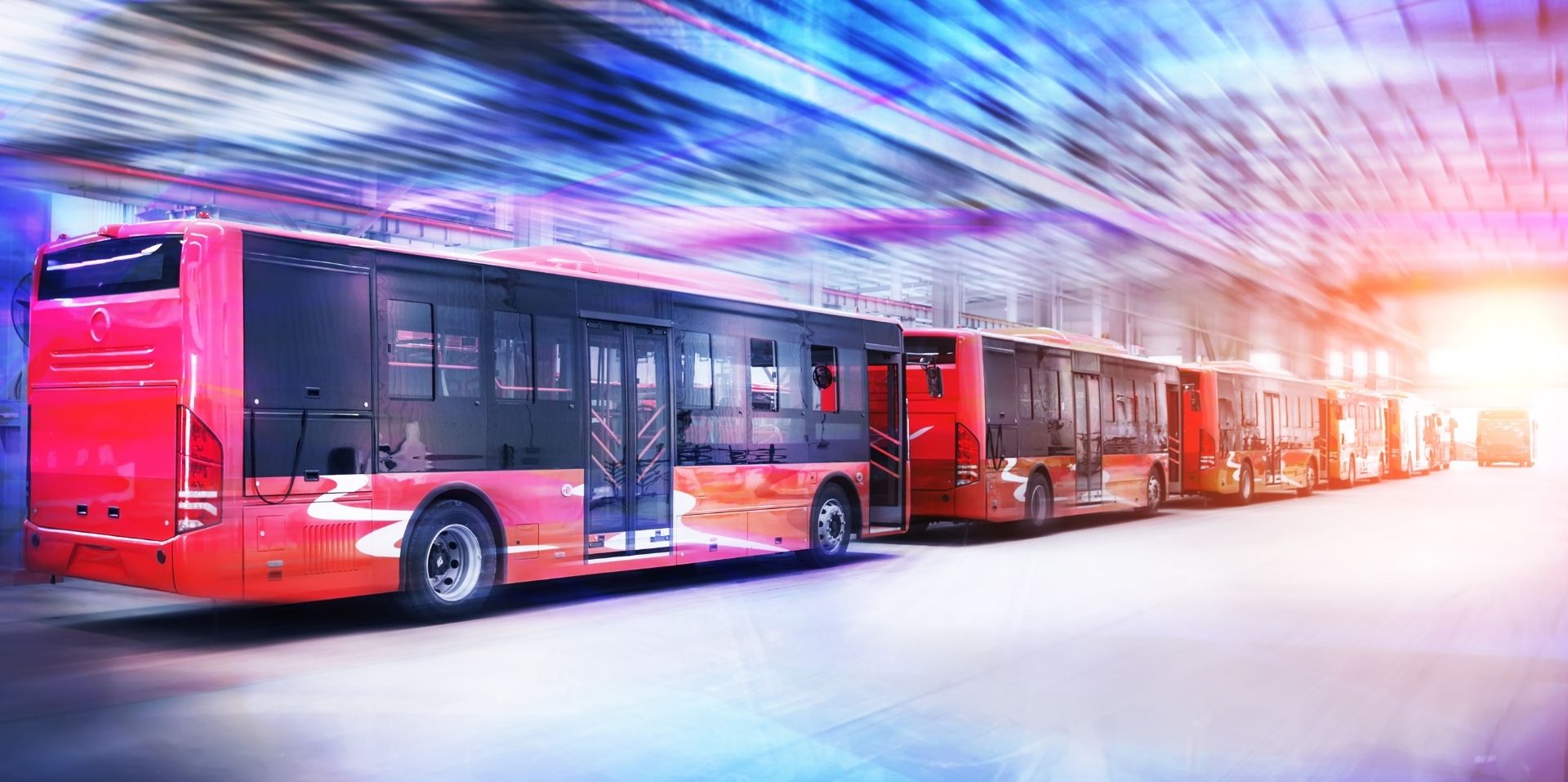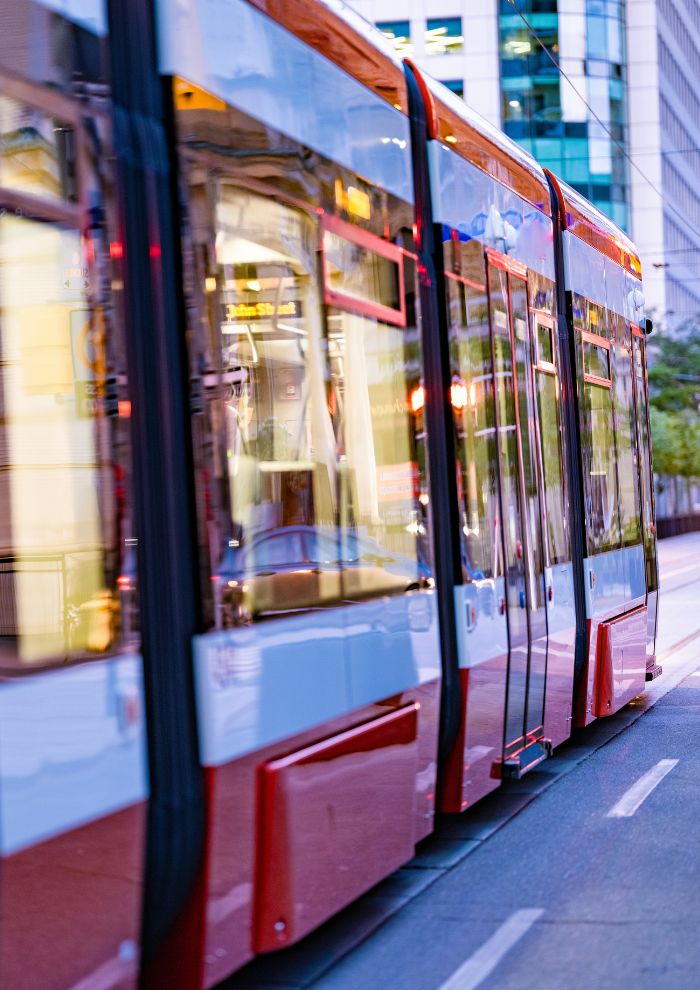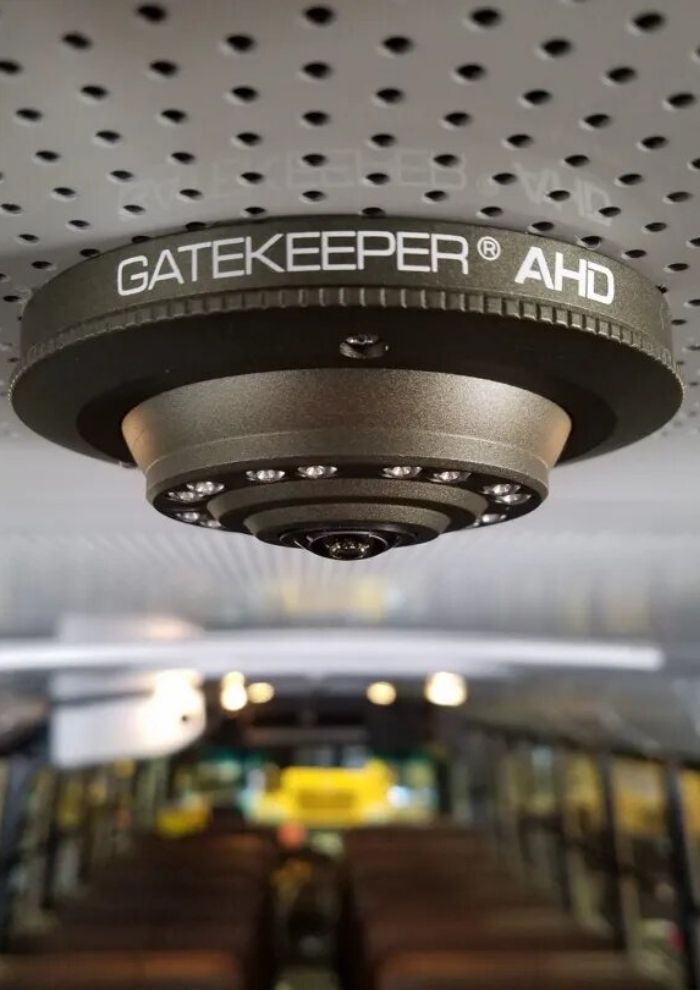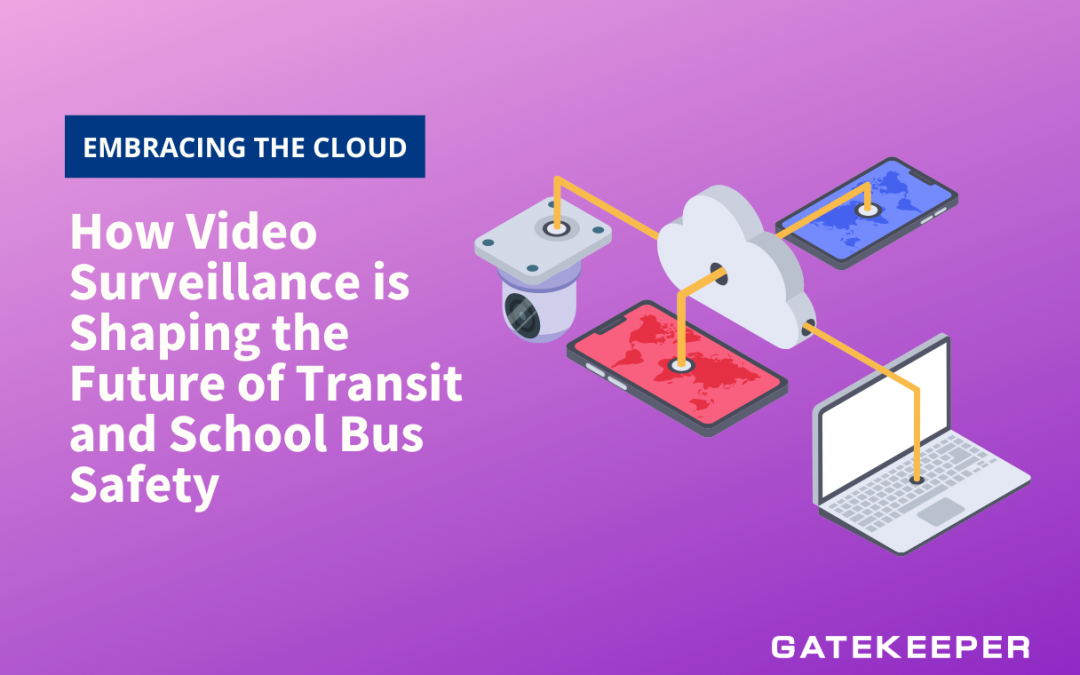Embracing the Cloud: How Video Surveillance is Shaping the Future of Transit and School Bus Safety
In the last several years, the rise of cloud-based video surveillance technology has marked a significant shift in how safety and security are approached in the transit and school bus industry.
There are multiple benefits to using cloud-based video surveillance, from real-time monitoring to streamlined management, to incorporating AI for increased safety and cost-effectiveness.
There is also the prospect of more tools to come that haven’t been developed yet that makes it such a valuable tool in enhancing safety standards for the transportation industry.
In many ways, cloud-based video surveillance is going to shape the future of transit and school bus systems.
How Does Cloud-Based Video Surveillance Work?
Cloud-based video surveillance refers to the data storage method where video data is stored, managed, and accessed remotely through the internet.
One of the main benefits of storing data remotely is that it allows for seamless integration with other cloud-based services.
Having this kind of connectivity helps provide a comprehensive solution for systems with as many moving parts as the transit and school bus industry.
Traditional video surveillance systems typically store footage on local devices, such as a DVR, which can be limiting in terms of accessibility, scalability, and maintenance.
In contrast, cloud-based video surveillance stores data on secure, remote servers, making it easier to access, manage, and scale as needed.
There are several key components of cloud-based video surveillance systems, including cameras, network connections, storage, and then a user interface to be able to access and manage the video data.
These systems, such as Gatekeeper’s G4 Vision, often come with advanced features, such as:
- Real-time monitoring and remote access allow for viewing live footage from any device with an internet connection.
- Video analytics and AI that enable the system to detect and analyze patterns, behaviors, and incidents automatically.
- Customizable alerts and notifications keep transportation directors instantly informed of any security or safety concerns.
- Secure data storage and encryption, ensuring that sensitive information is protected and compliant with privacy regulations.
- Easy integration with other cloud-based services and security systems, creating a comprehensive and connected security solution.
These state of the art features make cloud-based video surveillance second to none for enhancing safety, security, and overall efficiency.
Advantages of Cloud-Based Video Surveillance
The fact that cloud-based video surveillance allows for real-time monitoring of transit and school bus systems provides a level of safety and security never before attainable.
With immediate access to video footage, transit and school bus administrators can respond more effectively to incidents or emergencies.
Cloud-based systems also facilitate faster and better informed decision-making, which helps to minimize risks and protect passengers.
There is also AI features that are possible by using the cloud. For instance, passenger counting is possible using Advanced AI.
AI algorithms can analyze video footage to accurately count the number of passengers on a transit or school bus, enabling operators to monitor capacity and optimize routes.
AI-based surveillance systems can identify if a camera’s view has been obstructed or moved, sending real-time alerts to operators or security personnel to address the issue promptly, thus maintaining the integrity of the system.
AI-powered video analytics can process vast amounts of data to identify patterns and trends, helping transit and school bus systems proactively address potential safety concerns and optimize operations.
Storing video data in the cloud is easier than using physical hard drives, as it allows for centralized management and organization of footage across multiple locations and devices.
It simplifies the process of retrieving and reviewing video data and makes it more efficient for administrators to organize data.
Cloud-based video surveillance systems also allows authorized users to access footage from any device with an internet connection.
One of the biggest advantages of using cloud storage is that it can be easily scaled up or down to meet the changing needs of transit and school bus systems.
Adding or removing cameras, adjusting storage capacity, and modifying settings can all be done remotely and with minimal disruption.
This flexibility ensures that the security system remains effective and efficient, regardless of how the transit or school bus system evolves.
With cloud-based video surveillance, there also is no need for expensive on-site storage and server infrastructure.
This reduces upfront costs and ongoing maintenance requirements, making it a more cost-effective solution for transit and school bus systems.
Cloud-based video surveillance can be easily integrated with other security and safety systems, such as access control, alarm systems, and emergency response tools.
This seamless integration creates a more comprehensive and connected security solution, enhancing the overall safety and efficiency of transit and school bus systems.
By incorporating AI-driven features into cloud-based video surveillance systems, transit and school bus systems can further enhance safety and efficiency, leveraging the latest technology to address a wide range of operational challenges.
The Future of Cloud-Based Video Surveillance in Transit and School Bus Systems
As technology continues to evolve, we can expect to see even more advancements in cloud-based video surveillance.
Innovations such as AI-powered analytics, AI-powered features and advanced video compression techniques will enhance the capabilities and effectiveness of these systems, providing even greater benefits for transit and school bus safety.
As more organizations adopt cloud-based solutions, there will be increased opportunities for integration and collaboration between various systems and platforms.
This connectivity will enable transit and school bus systems to leverage data and insights from multiple sources, improving decision-making and overall operational efficiency.
Moving to cloud-based video surveillance is an essential step in ensuring the safety and security of transit and school bus systems.





